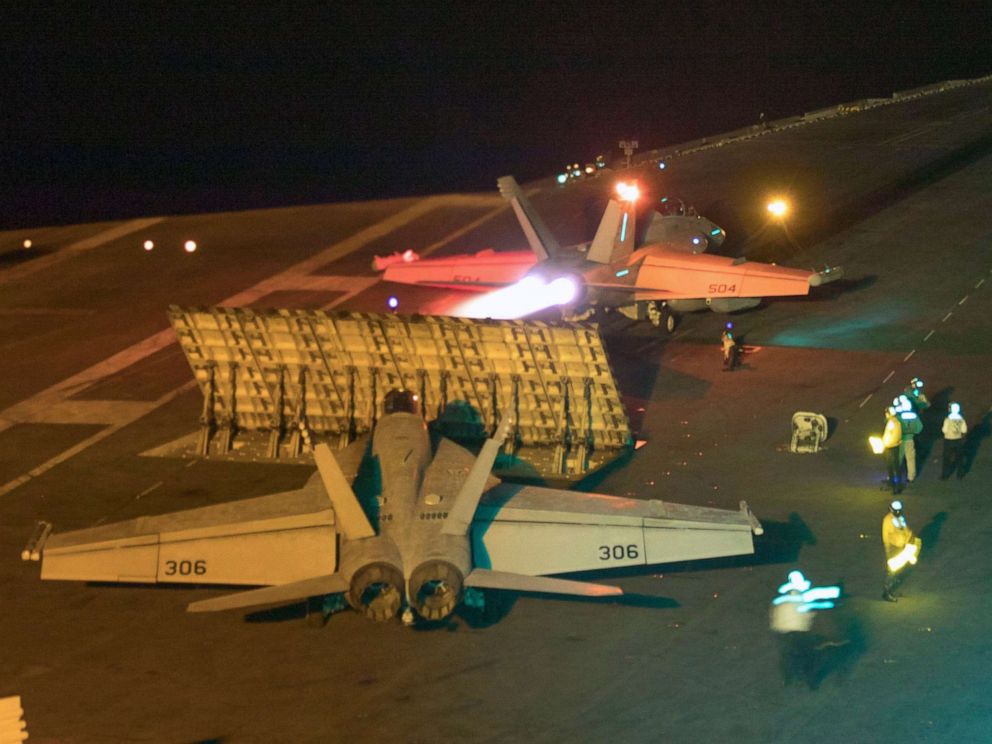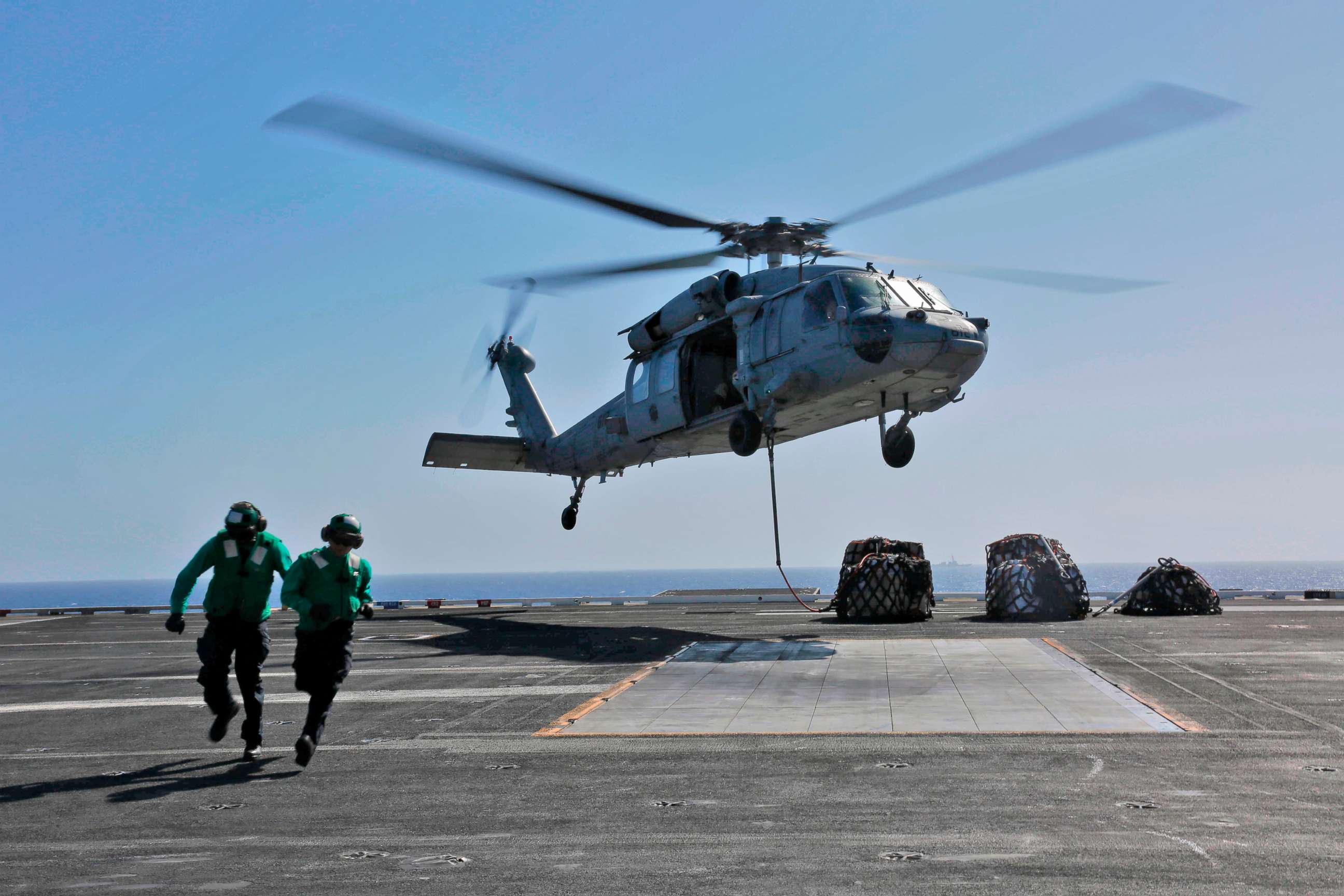US photos showed cruise missiles on Iranian boats
The photos were key threat indicating possible attacks on U.S. forces
One of the key "threat streams" that Iran or Iranian-backed groups in the Middle East were planning possible attacks against U.S. forces in Iraq, Syria and at sea were U.S. intelligence photos that indicated that Iran had placed cruise missiles on small boats in the Persian Gulf region that could be used against ships or land targets, according to a U.S. official.
That imagery suggested a threat to U.S. naval ships, ships of partner nations and was one of the factors that led U.S. Central Command to speed up the arrival of the USS Abraham Lincoln strike group to the Middle East, the official said.
The photos taken by U.S. intelligence showed missiles had been placed aboard small Iranian boats known as "dhows" in the waters off the Iranian port of Chabahar, east of the Persian Gulf two U.S. officials told ABC News.
A third U.S. official described the missiles as cruise missiles that could be used to target vessels sailing off the key waters off of Iran or at land targets.

Another U.S. official described the placement of the missiles on the dhows as "different" but did not know if it was a new type of missile.
The official stressed that while the imagery was a key piece of intelligence, the decision to deploy the Lincoln strike group and B-52 bombers to deter Iran or its allies from carrying out attacks against U.S. forces was generated by several pieces of intelligence. That included the possibility that Iranian-backed militias in Iraq and Syria might attack U.S. forces or facilities.
Last week a senior military official described "anomalous naval activity" by dhows and the possible placement of missiles but did not provide details about how the U.S. had obtained that information or where the boats were located.
At the time it was unclear what the purpose was for placing the missiles on the Iranian boats whether to be potentially used against at U.S. ships or other commercial vessels in the region or if they were being transported outside of Iran.
The carrier strike group is now in the Arabian Sea after having sailed through the Red Sea this past weekend, according to two U.S. officials. It was unclear if the strike group would sail into the Persian Gulf.
The U.S. intelligence community continues to assess last Sunday's sabotage attacks on four vessels off the coast of the United Arab Emirates. But an an initial assessment has concluded that an Iranian-backed group placed explosive charges on the hulls of the four vessels, said a U.S. official.
American officials said that U.S. intelligence continues to see multiple threat streams from Iran across the Middle East, not just in the Gulf region.
On Wednesday, the State Department ordered the evacuation of non-essential personnel from the U.S. embassy in Baghdad and the consulate in Erbil.
Senior State Department officials told reporters that the evacuation as a prudent step in "light of credible threat streams."

Congressional leaders are scheduled to receive their first briefing on the intelligence and the new military deployments to the Middle East later on Thursday.
Members of Congress have raised concerns about a New York Times report that the Pentagon had presented a plan to send an additional 120,000 U.S. forces to the Middle East if Iran strikes at U.S. targets or proceeds to once again enrich uranium.
An administration official confirmed that national security officials met at the White House last week to discuss Iran options, but that sending more troops was not part of a new plan.
Instead, the official said senior Pentagon officials presented a wide range of the military's existing contingency options to respond to the variety of scenarios that could involve Iran.
ABC News' Jordyn Phelps contributed to this report.




